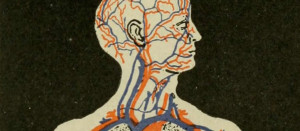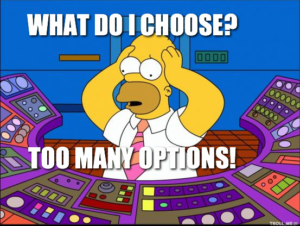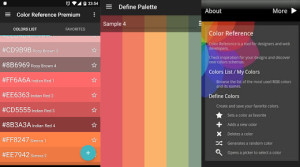- Platform Wars
- Adobe’s Drastic Interface Overhaul
- Invisible UI’s — Smart Guides and Keyboard Shortcuts
- Reusable Components (Symbols)
- Repeatable Components (Repeat Grids)
- Prototyping User Flows (Only in Adobe XD)
- Exporting Image Assets
- Conclusion
- Frequently Asked Questions on Adobe XD and Sketch for UX Design
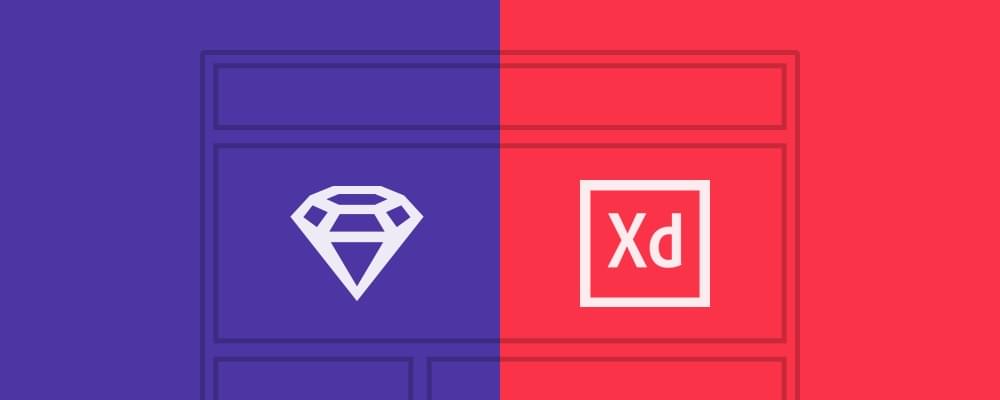
We’ve been comparing Sketch to Photoshop (and sometimes Illustrator) for quite some time now, but now the debate is being fueled by this question: Adobe XD or Sketch? Photoshop is falling by the wayside when it comes to UI design.
Why? Because, for a long time, Photoshop was Sketch’s only direct competitor, despite the fact that Photoshop is primarily used to edit photos. Adobe then sought to improve Photoshop for user interface designers ⏤ they added Artboards, a better export workflow, Smart Guides, and so on. However, the main issue with those new features was that they made Photoshop even more bloated than it already was. It was like adding an ice skating rink to an ocean liner.
With Sketch continually gaining momentum, and the fact that more new design apps were starting to pop up (Affinity Designer, Figma, etc), Adobe needed to build a fast, ultra-clean app that’s dedicated to user interface designers. Photoshop also needed to be about photos again.
Enter Adobe Experience Design CC, also known as Adobe XD – their fresh attempt at a pure UI Design tool.
So, which app is more suitable for you, Adobe XD or Sketch?
Platform Wars
Sketch is only available for macOS users – let’s establish that right now. Designers have scrutinized this decision, but it is what it is. Adobe XD is available for Windows and macOS.
Adobe’s Drastic Interface Overhaul
No doubt the first thing you’ll notice about Adobe XD is the beautifully minimal interface (when compared to Photoshop). Since Adobe XD focuses on user interface design, you’ll find image-editing tools virtually non-existent, so the app’s interface is much less overwhelming in comparison to other Adobe apps. This isn’t the app for retouching photos or removing backgrounds.
For those Adobe fans that didn’t want to switch to Sketch (or couldn’t because they use Windows), but otherwise acknowledged that Photoshop wasn’t the right tool for UI design, then I promise you, this is the tool you’ve been waiting for.
But what if you’re macOS user who has the choice of both tools? Well, in that respect, you’ll find that Sketch and XD are very neck-and-neck – their UI layouts are almost identical.
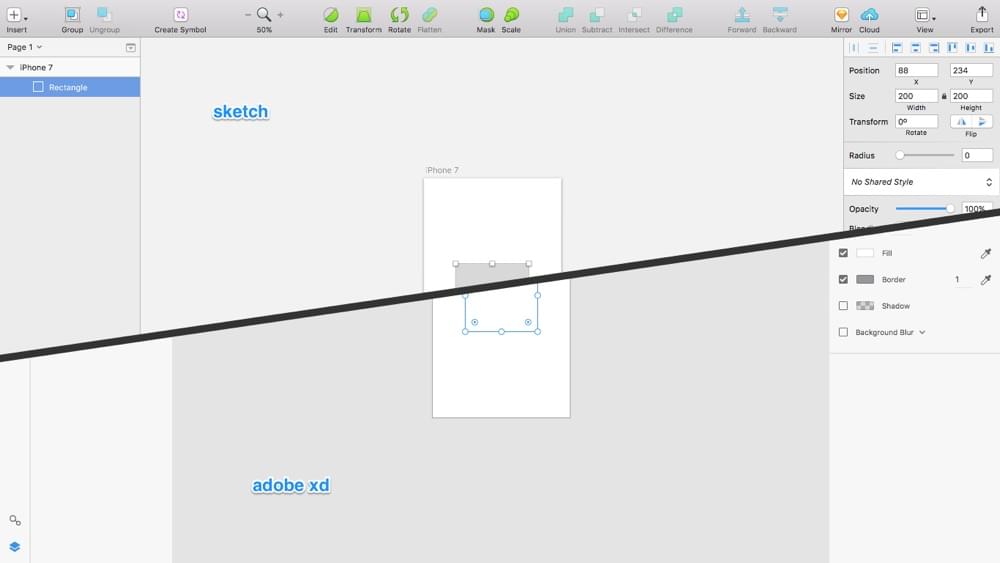
Invisible UI’s — Smart Guides and Keyboard Shortcuts
What I love most about Sketch also exists in Adobe XD — invisible interfaces. By invisible, I mean there are ways to accomplish certain tasks without having to interact (i.e. click) with an interface, either because the actions are automatic or because there’s an ultra-minimal keyboard shortcut for it.
Need 50% opacity on a layer? Just hit “5” on the keyboard. Need to align a layer with a 20px margin? No worries, the Smart Guides that automatically appear will let you know how close you are. Smart Guides can be activated with the option key (⌥) too!
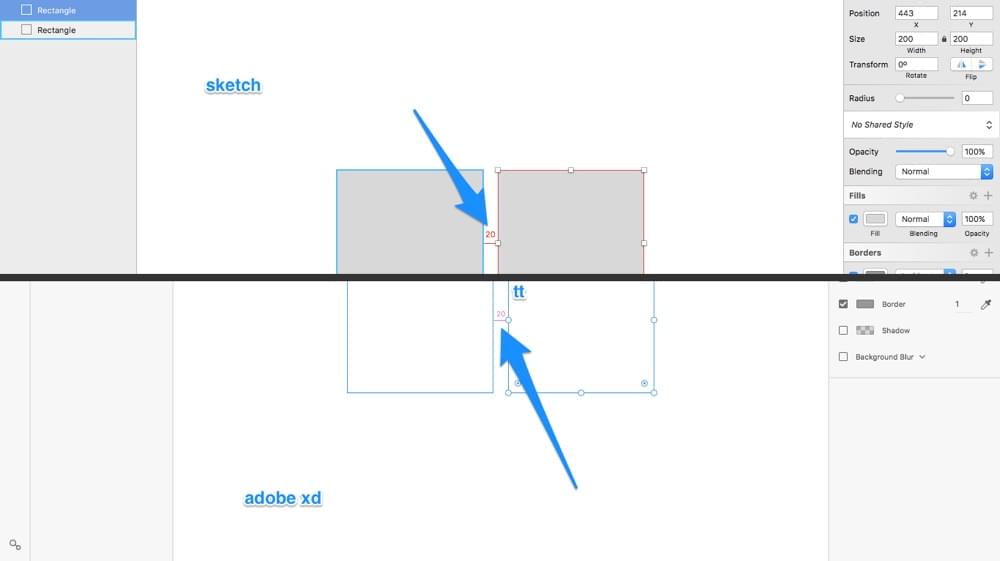
Reusable Components (Symbols)
Both applications sound equally impressive so far, but the realbattle begins when it comes to the bigger features.
Let’s take a look at Symbols first.
Symbols are reusable design elements/components. Essentially, you maintain a “master” symbol and all instances of that symbol in the main document (in your design) mirror the master symbol.
Inserting symbols is very, very easy!
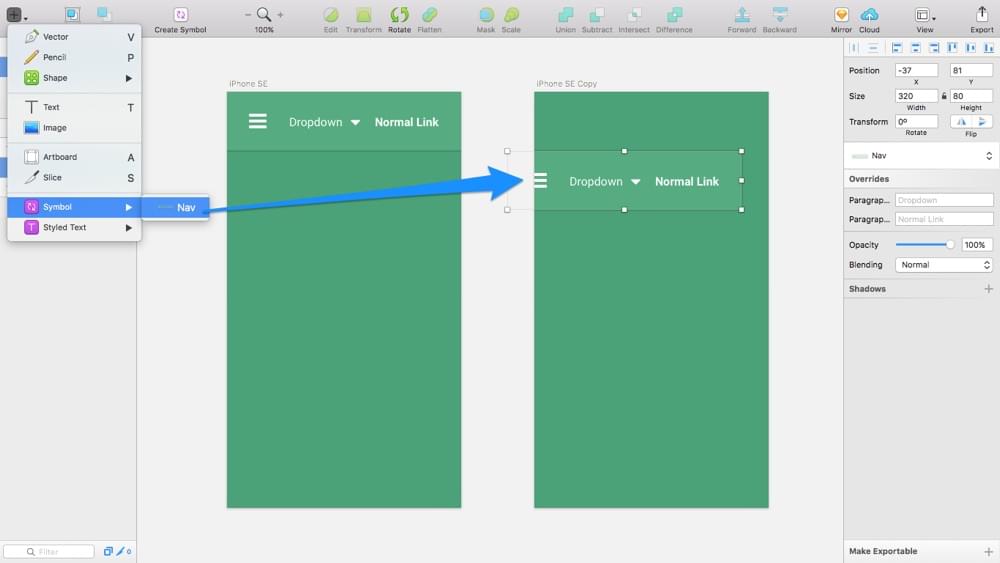
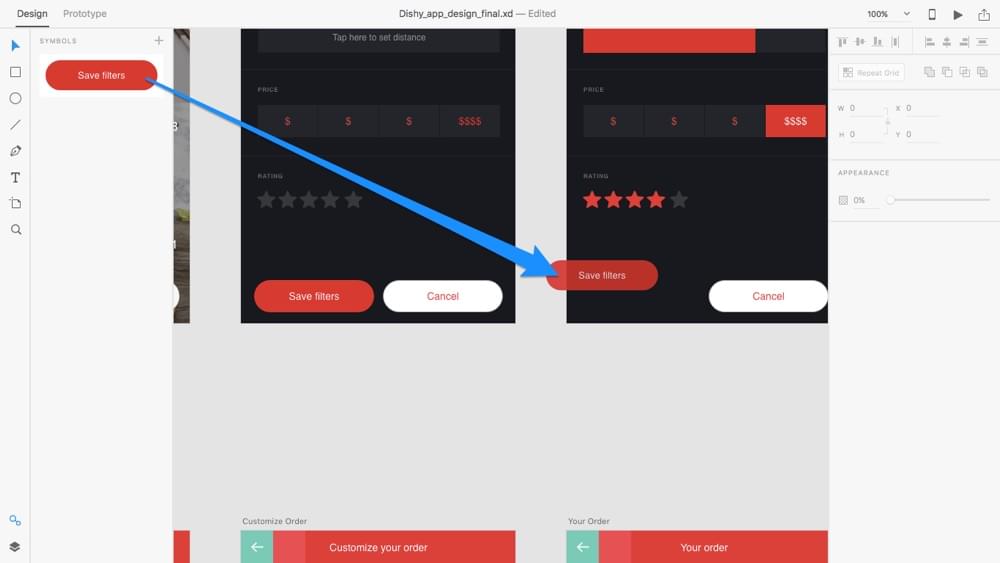
But what happens when you need one instance of a component to look different from another instance? What if one navigation instance needs to show a hover state in one of the screens?
No worries, Sketch allows you to nestsymbols inside other symbols. You would basically design the different states for your icons as a separate symbol and choose which state to use in the bigger, larger symbol (in this case, the menu navigation).
Adobe hasn’t implemented nested symbols in XD yet (at the time of writing), but it’s highly likely that they will in the future. In this respect, Sketch is winning the race because they’ve been around longer, however, XD is advancing rapidly.
By the way, the stunning UI kit used in these screenshots is called Dishy (created by Serge Vasil) and you can find it here.
Repeatable Components (Repeat Grids)
Repeat Grids is an iconic feature in Adobe XD ⏤ something that no other UI design application currently offers. It allows you to repeat components horizontally and vertically while inserting unique content in each tile. You can even multi-drag assets (image and text files) from your desktop to have that content inserted and distributed automatically.
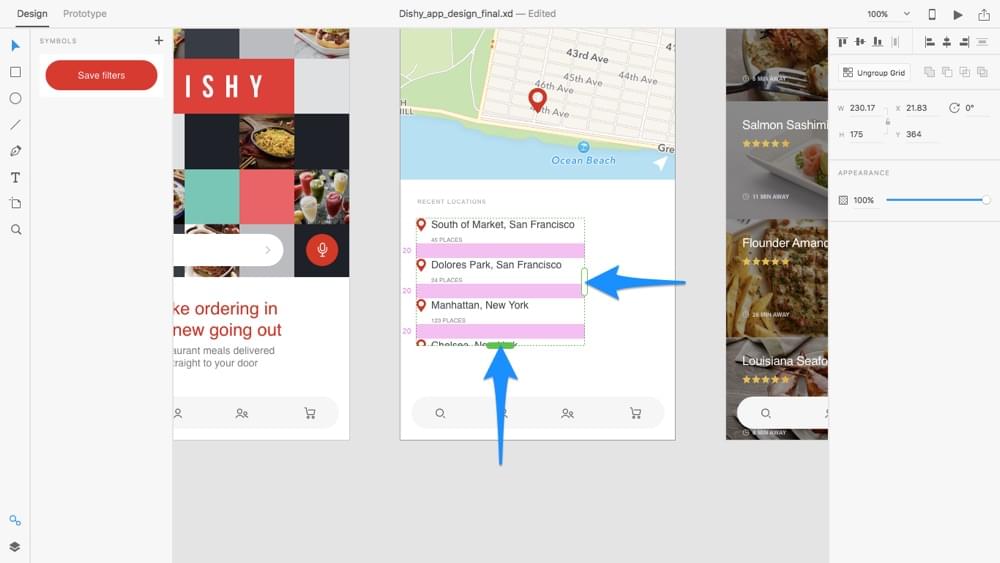
So far, Sketch hasn’t implemented a feature like this, although because Sketch allows the developer community to build extensions, you can install the Craft Plugin which will allow you to accomplish the same thing.
Personally, I love the fact that this feature in native in Adobe XD!
Prototyping User Flows (Only in Adobe XD)
Prototyping user flows isn’t something that you can do in Sketch, so ‘Sketchers’ have to fall back on integrating with another service like InVision App, Marvel App or Atomic App (which is fine, they’re all wonderful apps!). Adobe XD offers design and prototyping tools built into one, so if you like to keep your workflow contained to a single app, then Adobe XD might be for you.
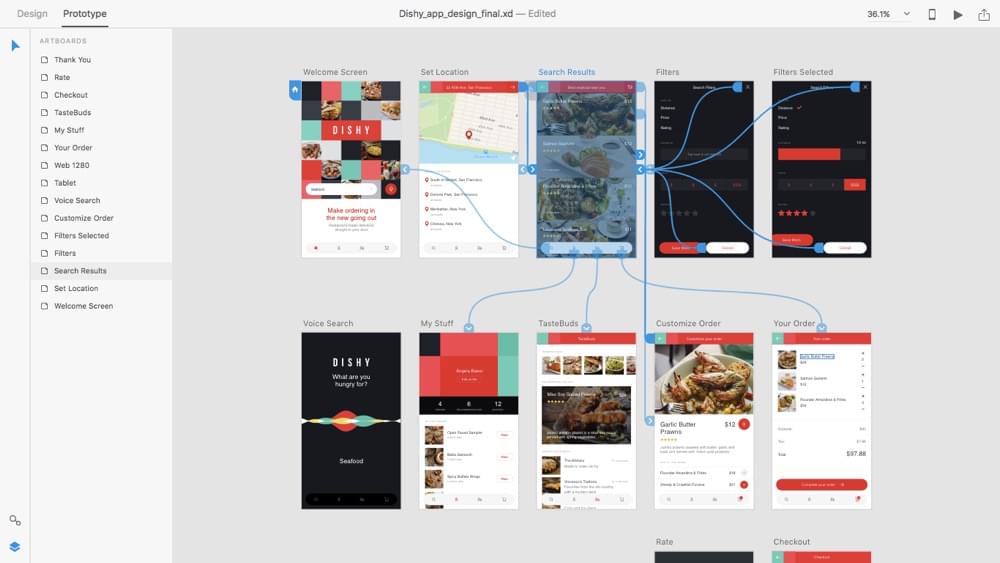
Exporting Image Assets
Image asset export is very similar in both apps, although I do sometimes need to export JPG files, which only Sketch supports, so this really comes down to your individual needs.
Both apps support PDF, PNG, and SVG.
Conclusion
If you thought the competition between Photoshop and Sketch was fierce, then you’re in for a surprise with Adobe XD — the competition between Adobe XD and Sketch is driving them to constantly better themselves, which is awesome news for us designers who want to design better and faster.
But which should you ultimately choose? Adobe XD or Sketch? For Windows users, Adobe XD is the clear choice. But for macOS users, it might come down to your individual needs.
- Do you need prototyping tools? (Adobe XD offers this natively)
- More flexibility for symbols? (Sketch is slightly better here)
- Might you fall in love with repeat grids? (exclusive to Adobe XD!)
Interested to learn more about the finer aspects of designing, prototyping and collaborating with Adobe XD? SitePoint Premium members can download our brand new book, Jump Start Adobe XD!
Frequently Asked Questions on Adobe XD and Sketch for UX Design
What are the key differences between Adobe XD and Sketch in terms of user interface?
Adobe XD and Sketch have different user interfaces, each with its own strengths. Adobe XD has a more intuitive and user-friendly interface, making it easier for beginners to get started. It offers a simple and clean workspace with easily accessible tools. On the other hand, Sketch has a more complex interface with a wide range of tools and features. It may take some time for beginners to get used to, but it offers more customization options for experienced designers.
How does the collaboration feature compare between Adobe XD and Sketch?
Collaboration is a crucial aspect of UX design. Adobe XD excels in this area with its live co-editing feature, allowing multiple team members to work on the same project simultaneously. Sketch, however, lacks this feature. It does offer a cloud-based platform for sharing and feedback, but it doesn’t support real-time collaboration.
Can you explain the prototyping capabilities of Adobe XD and Sketch?
Both Adobe XD and Sketch offer robust prototyping capabilities. Adobe XD allows you to create interactive prototypes with ease, thanks to its auto-animate feature. You can also preview your prototypes in real-time. Sketch, on the other hand, requires a third-party plugin for prototyping. However, it does offer a wide range of plugins, giving you more flexibility in your prototyping process.
How do Adobe XD and Sketch handle components and symbols?
Components and symbols are essential for creating consistent designs. Adobe XD uses components, which can be easily reused and updated across your design. Sketch uses symbols, which function similarly but offer more customization options. However, managing symbols in Sketch can be more complex than managing components in Adobe XD.
What are the pricing models for Adobe XD and Sketch?
Adobe XD offers a free starter plan, as well as paid plans starting at $9.99 per month. Sketch, on the other hand, is a paid software with a one-time payment of $99 for a one-year license. It also offers a free trial for users to test out the software before purchasing.
How do Adobe XD and Sketch support third-party integrations?
Adobe XD supports a wide range of third-party integrations, including popular tools like Slack, Jira, and Microsoft Teams. Sketch also supports third-party plugins, but the range is not as extensive as Adobe XD.
Which software is better for cross-platform design, Adobe XD or Sketch?
Adobe XD is a cross-platform tool, meaning it works on both Mac and Windows. Sketch, however, is only available for Mac. This makes Adobe XD a more versatile tool for teams working on different operating systems.
How do the learning curves of Adobe XD and Sketch compare?
Adobe XD is generally considered easier to learn due to its intuitive interface and straightforward tools. Sketch, with its wide range of features and tools, may have a steeper learning curve, especially for beginners.
Can you discuss the community support for Adobe XD and Sketch?
Both Adobe XD and Sketch have strong community support. Adobe XD benefits from the large Adobe community, with numerous tutorials and resources available online. Sketch also has a dedicated community, with a wealth of plugins and resources created by users.
How do Adobe XD and Sketch handle updates and new features?
Adobe XD regularly releases updates and new features, keeping the software up-to-date with the latest design trends. Sketch also releases updates, but at a slower pace. However, Sketch’s updates are often more substantial, introducing significant new features or improvements.
 Daniel Schwarz
Daniel SchwarzPreviously, design blog editor at Toptal and SitePoint. Now Daniel advocates for better UX design alongside industry leaders such as Adobe, InVision, Marvel, Wix, Net Magazine, LogRocket, CSS-Tricks, and more.



